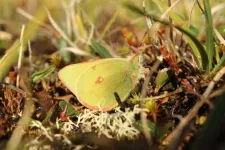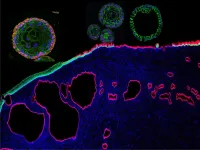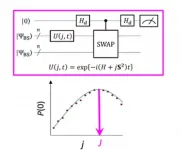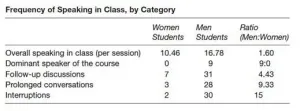(Press-News.org) Using cutting-edge DNA sequencing technologies, a group of laboratories in Konstanz, Würzburg, Hamburg and Vienna, led by evolutionary biologist Professor Axel Meyer from the University of Konstanz, succeeded in fully sequencing the genome of the Australian lungfish. The genome, with a total size of more than 43 billion DNA building blocks, is nearly 14 times larger than that of humans and the largest animal genome sequenced to date. Its analysis provides valuable insights into the genetic and developmental evolutionary innovations that made it possible for fish to colonize land. The findings, published online in the journal Nature, expand our understanding of this major evolutionary transition in the Devonian ~420 million years ago.
Lungfishes are the closest living fish relatives of humans. They still have a lot in common with fish, but already have some characteristics of terrestrial vertebrates. Discovered exactly 150 years ago, the Australian lungfish (Neoceratodus forsteri) is considered a "living fossil" that closely resembles fossils of lungfishes (Ceratodus) that lived until 100 million years ago. The anatomical bone arrangement of their "fleshy" fins is recognizably similar to that of tetrapods including human limbs and the Australian lungfish also moves more like a salamander than a fish. As their name implies, lungfish also have lungs that they must use to breathe air at the water's surface, they might drown otherwise.
Lungfishes still resemble our fish ancestors that left the water
The evolutionary history of lungfishes is extremely long. They belong to the few surviving lobe-finned fish lineages(Sarcopterygii), that lived at the time of the "conquest of the land" about 420 million years ago, and of which many have long since become extinct. One of this extinct lines of lobe-finned fish gave rise to terrestrial vertebrates, the tetrapods, that is, all amphibians, reptiles, birds, and mammals. Lungfish still resemble these extinct lineages of that time, which successfully left the water. This is why studying their genome is so important and promising. The lungfishes' genome, however, is among the largest of all animals. It is nearly 14 times larger than that of humans, which had made it technically impossible to decipher up to now. Using cutting-edge DNA sequencing technologies, this research consortium now succeeded in fully sequencing and assembling the giant genome of the Australian lungfish. It is the largest animal genome sequenced to date.
The complete sequencing of the Australian lungfish genome, with a total size of about 43 billion DNA nucleotides, now makes it possible to confirm the key evolutionary position of lungfishes as the closest living relatives of tetrapods. Additionally, the new and much larger data set of the decoded genome allows to confirm the earlier hypothesis that the lungfish is more closely related to terrestrial vertebrates than the coelacanth, which for more than 50 years after its discovery in 1938 was considered the closest living fish relative to humans.
Moving to land required a series of evolutionary innovations
"What can we find in the lungfishes' genome that explains how these fish could leave the water and move to land?", Axel Meyer phrases the main question. Genomic pre-adaptations have been found in the genomic analysis - genetic pre-adaptations to the new environmental conditions of terrestrial life that were not previously present. The major evolutionary event of colonizing the land required a number of other evolutionary innovations in addition to air breathing through the development of the lung, such as the abilities to smell scents in the air and to move on land. Based on genome sequencing, the study reconstructs land conquest from several aspects such as the evolution of limbs from fins, air breathing, olfaction, and reproduction. Thus, it was shown that the same genes that control embryonic lung development in humans also already fulfilled this function in the lungs of lungfish. "The lungs of lungfish can therefore evolutionarily be traced to the same origin as those of terrestrial vertebrates, including humans," says Axel Meyer.
The gene families that serve to smell the air have significantly grown, and the development of fins is already comparable to the embryology of our hands in many aspects, such as the function of the hox-c13 and sal1 genes. The architecture of the fingers in the hand and also of the ulna and radius is already laid out in the fin of the lungfish, for which the same genes and the same gene regulation are responsible as in humans.
The "signature" of the common evolutionary origin was preserved
Even in the face of the immense size of the genome, the arrangement of genes on the chromosomes is surprisingly conservative in evolutionary terms, making it possible to reconstruct the state of the primordial "Ur-vertebrate" chromosome set. Thus, despite the unique expansion history of the lungfish genome, the genetic organization and homology, the "signature" of the common evolutionary origin, i.e. of the chromosomes, has been preserved for hundreds of millions of years.
Several individual lungfish chromosomes are each as large as the complete human genome (with 23 chromosomes) combined. The enormous size of the lungfish genome can be explained by mobile DNA elements of different classes, whose position in the genome is variable and which together account for 90 percent of the total genetic material. Especially the so-called LINE elements that belong to this group have been duplicated extremely frequently in two waves during the evolutionary history of lungfishes. In the composition of these mobile elements, too, the lungfish already resembles terrestrial vertebrates more than fish.
For the sequencing of the lungfish genome, Axel Meyer, together with Professor Manfred Schartl from the University of Würzburg and Professor Torsten Burmester from Hamburg University, has been funded by the German Research Foundation (DFG) with more than 500,00 euros since 2018.
INFORMATION:
Key facts:
Axel Meyer, Siegfried Schloissnig, Paolo Franchini, Kang Du, Joost Woltering, Iker Irisarri, Wai Yee Wong, Sergej Nowoshilow, Susanne Kneitz, Akane Kawaguchi, Andrej Fabrizius, Peiwen Xiong, Corentin Dechaud, Herman Spaink, Jean-Nicolas Volff, Oleg Simakov, Thorsten Burmester, Elly M. Tanaka, Manfred Schartl 2020. Giant Lungfish genome elucidates the conquest of land by vertebrates. Doi: 10.1038/s41586-021-03198-8
Research collaboration of laboratories based at universities and research institutions in Konstanz, Würzburg, Hamburg and Vienna succeeded in fully sequencing the genome of the Australian lungfish, the largest animal genome sequenced to date
Genome analysis expands the understanding of the vertebrates' transition to land
With significant participation of the evolutionary biologist Professor Axel Meyer from the University of Konstanz
Lungfish genome sequencing funded with more than 500,000 euros by the German Research Foundation (DFG) since 2018.
Note to editors:
You can download a picture here:
https://cms.uni-konstanz.de/fileadmin/pi/fileserver/2021/was-das-genom.jpg
Photo: Copyright: Pixabay
Contact
University of Konstanz
Communications and Marketing
Phone: + 49 7531 88-3603
E-Mail: kum@uni-konstanz.de
- uni.kn
Researchers at the University of Helsinki have defined a cancer invasion machinery, which is orchestrated by a frequently mutated cancer gene called Ras. When signaling from Ras protein becomes abnormally high, like it does in many cancers, this switches on the cellular machinery that helps the cancer cells to depart from the tissue from which the cells have developed.
It has been unclear how the cancer invasion machinery works exactly, until now, as the study finds Ras in the role of Friar Lawrence in Shakespeare's famous play, "Get me an iron crow and bring it straight unto my cell (Romeo and Juliet, 5.2.21-23)." ...
Climate change is more pronounced in the Arctic than anywhere else on the planet, raising concerns about the ability of wildlife to cope with the new conditions. A new study shows that rare insects are declining, suggesting that climatic changes may favour common species.
As part of a new volume of studies on the global insect decline, researchers are presenting the first Arctic insect population trends from a 24-year monitoring record of standardized insect abundance data from North-East Greenland.
The work took place during 1996-2018 as part of the ecosystem-based monitoring program Greenland Ecosystem Monitoring at the field station Zackenberg, located in the world's largest national ...
Organoids are increasingly being used in biomedical research. These are organ-like structures created in the laboratory that are only a few millimetres in size. Organoids can be used to study life processes and the effect of drugs. Because they closely resemble real organs, they offer several advantages over other cell cultures.
Now there are also organoid models developed for the cervix. This part of the female body is particularly at risk to develop cancers. By creating novel organoid models, a group led by Cindrilla Chumduri (Würzburg), Rajendra Kumar Gurumurthy (Berlin) and Thomas F. Meyer ...
WHAT:
Healthcare providers must be able to explain the latest data supporting the safety and efficacy of vaccines for coronavirus disease 2019 (COVID-19) so they can strongly encourage vaccination when appropriate while acknowledging that uncertainty and unknowns remain. This message comes from a new commentary co-authored by Anthony S. Fauci, M.D., director of the National Institute of Allergy and Infectious Diseases (NIAID), part of the National Institutes of Health, and other leading NIAID scientists in the journal Annals of Internal Medicine.
The commentary provides an overview of the seven COVID-19 vaccines furthest along in development in the United States. For each vaccine candidate, the authors describe ...
Understanding how the natural world works enables us to mimic it for the benefit of humankind. Think of how much we rely on batteries. At the core is understanding molecular structures and the behavior of electrons within them. Calculating the energy differences between a molecule's electronic ground and excited spin states helps us understand how to better use that molecule in a variety of chemical, biomedical and industrial applications. We have made much progress in molecules with closed-shell systems, in which electrons are paired up and stable. Open-shell systems, on the ...
Men speak 1.6 times more often than women in college classrooms, revealing how gender inequities regarding classroom participation still exist, according to a Dartmouth study. By comparison, women are more hesitant to speak and are more apt to use apologetic language. The findings are published in Gender & Society.
When students didn't have to raise their hands to participate in class, men spoke three times more often than women. "You would think that it would be more equitable for students to not have to raise their hands to speak in class because then anyone could talk ...
RICHLAND, Wash.--E-cigarettes stress and inflame the lungs of rats, compromising important regulatory proteins through exposure, according to research recently published in the journal Redox Biology. The findings, made possible by a biomolecular technique developed by researchers at the U.S. Department of Energy's Pacific Northwest National Laboratory, reveal that vaping induces subtle structural changes in proteins, marking the first time researchers have measured such damage. The results suggest that common compounds in the electronic alternative to conventional cigarettes are not without their own harms.
After exposing rats to e-cigarette vapor for three one-hour sessions ...
Some say future wars will be fought over water, and a billion people around the world are already struggling to find enough water to live.
Now, researchers at the National University of Singapore (NUS) are coming to the rescue. They have created a substance that extracts water from air without any external power source.
In the earth's atmosphere, there is water that can fill almost half a trillion Olympic swimming pools. But it has long been overlooked as a source for potable water.
To extract water from this under utilised source, a team led by Professor Ho Ghim Wei from the NUS Department of Electrical and Computer Engineering created a type of aerogel, a solid material that weighs almost nothing. Under the microscope, it looks like a sponge, but it ...
University of South Australia scientists have developed the world's first test to accurately predict mood disorders in people, based on the levels of a specific protein found in the brain.
Links between low levels of mature brain-derived neurotrophic factor (mBDNF) and depression are well known but, until now, it hasn't been possible to distinguish between the three forms of the BDNF protein in blood samples.
The mature form promotes the growth of neurons and protects the brain, but the other two BDNF forms - its precursor and the prodomain of BDNF - bind to different receptors, causing nerve degeneration ...
SINGAPORE, 19 January 2021 - Duke-NUS Medical School researchers, together with collaborators in Singapore, have designed armoured immune cells that can attack recurring cancer in liver transplant patients, while temporarily evading immunosuppressant drugs patients take to avoid organ rejection. The findings were published in the journal Hepatology.
Hepatocellular carcinoma is the most common type of primary liver cancer and the sixth most common cancer worldwide. It often develops in people with chronic liver disease following hepatitis B infection.
A common treatment for hepatocellular carcinoma is to completely ...






